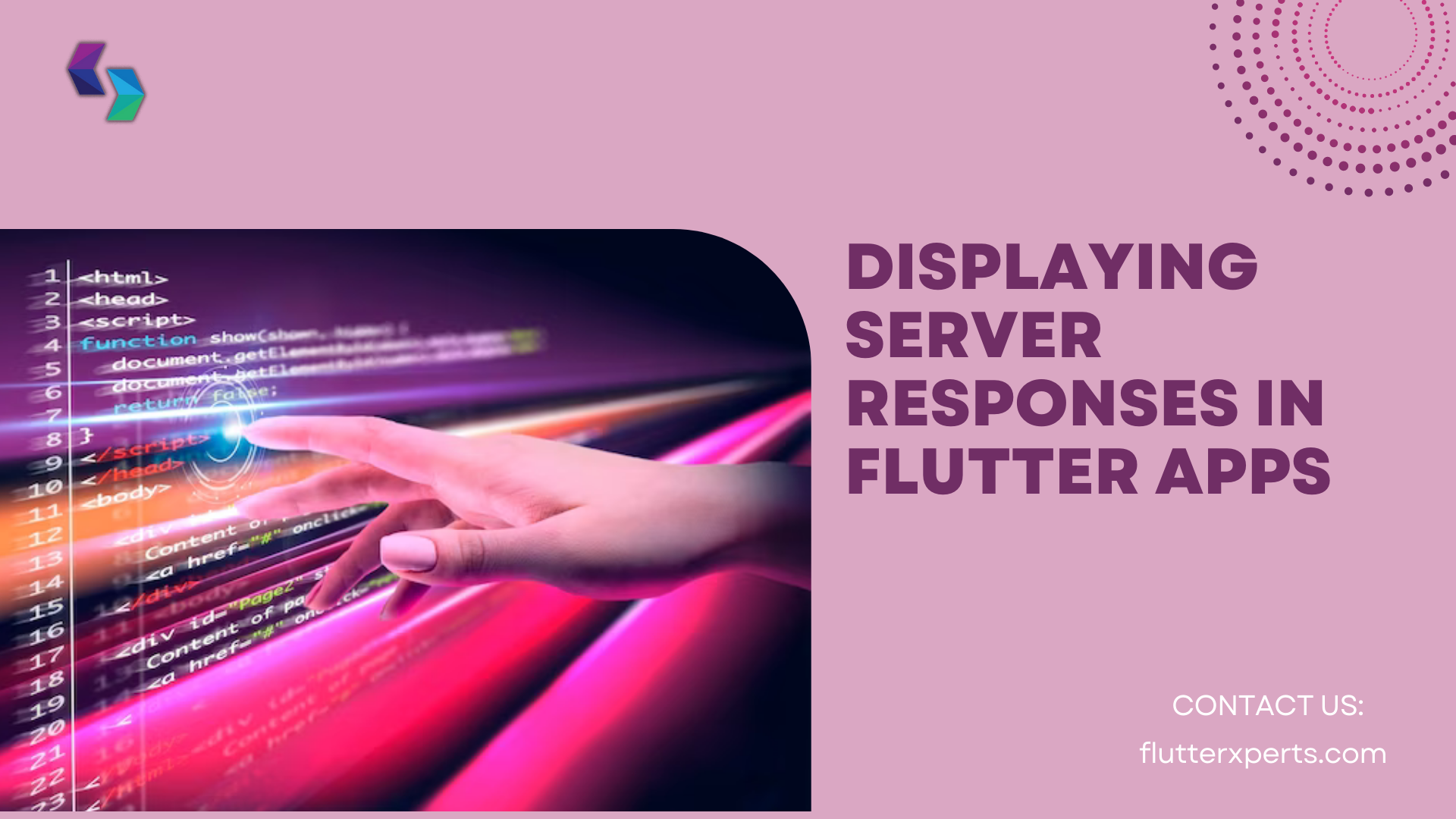Efficient Ways to Show Server Responses on Flutter App Screens
Introduction
Developing mobile applications often involves integrating server communication to fetch and display data. In Flutter app development, it is crucial to efficiently handle and display server responses on app screens. This article will guide you through the process of setting up API communication, parsing server responses, handling error responses, and displaying the server responses on Flutter app screens. We will also discuss best practices for effectively presenting server responses to enhance the user experience.
Understanding Server Responses in Flutter Apps
Before diving into the technical implementation, let’s understand what server responses are in the context of Flutter apps. When an app makes an API request to a server, the server processes the request and sends back a response. This response can contain various types of data, such as JSON, XML, or even binary files. As a Flutter developer, you need to handle and interpret these responses to extract the relevant information for display.
Setting Up API Communication
To communicate with a server and receive responses in a Flutter app, you need to establish API communication. In this example, we will use the http package for making API requests. To add the http package to your Flutter project, follow these steps:
- Open your project’s
pubspec.yamlfile. - Add
httpas a dependency under thedependenciessection:dependencies: flutter: sdk: flutter http: ^0.13.3 - Save the file and run the command
flutter pub getin your project’s root directory to fetch the package.
Now that you have added the http package to your project, you can use it to send HTTP requests to the server and receive responses.
Creating Model Class to Store Parsed Data
To efficiently handle and store the parsed data from the server response, it is recommended to create a model class. The model class represents the structure of the data you expect to receive from the server. Here’s an example of creating a model class for a server response containing a list of items:
class Item {
final String title;
final String description;
final String imageUrl;
Item({
required this.title,
required this.description,
required this.imageUrl,
});
}
By creating a model class, you can easily map the parsed data from the server response into objects of the defined class, making it convenient to work with and display the data in your Flutter app.
Handling Exceptions
When working with server responses, it’s crucial to handle exceptions that may occur during the API communication or data parsing. The http package provides exception classes like HttpException and SocketException that you can catch and handle appropriately. Here’s an example of handling exceptions when making an API request:
import 'package:http/http.dart' as http;
Future<void> fetchServerData() async {
final url = 'https://api.example.com/data';
try {
final response = await http.get(Uri.parse(url));
if (response.statusCode == 200) {
// Handle the successful response
} else {
// Handle error responses
}
} catch (e) {
// Handle exceptions
}
}
Make sure to handle exceptions in a way that provides meaningful feedback to the user and gracefully handles any issues encountered during the server communication.
Adding a Circular Indicator Until Data Loads
To provide visual feedback to the user while the server response is being fetched, you can use a circular progress indicator. Flutter provides a CircularProgressIndicator widget that you can display on the screen until the data loads. Here’s an example of adding a circular indicator:
import 'package:flutter/material.dart';
class DataScreen extends StatelessWidget {
@override
Widget build(BuildContext context) {
return FutureBuilder(
future: fetchServerData(),
builder: (context, snapshot) {
if (snapshot.connectionState == ConnectionState.waiting) {
return Center(
child: CircularProgressIndicator(),
);
} else if (snapshot.hasError) {
return Text('Error occurred: ${snapshot.error}');
} else {
// Display the data on the screen
}
},
);
}
}
By using the FutureBuilder widget, you can display the circular progress indicator while waiting for the server response. Once the response is received, you can render the data on the screen.
Showing Error on the Screen if an Error Occurs
In case of an error during the server communication or data parsing, it’s important to display the error message on the screen to provide feedback to the user. You can use Flutter’s Text widget or a dedicated error message widget to display the error. Here’s an example:
import 'package:flutter/material.dart';
class DataScreen extends StatelessWidget {
@override
Widget build(BuildContext context) {
return FutureBuilder(
future: fetchServerData(),
builder: (context, snapshot) {
if (snapshot.connectionState == ConnectionState.waiting) {
return Center(
child: CircularProgressIndicator(),
);
} else if (snapshot.hasError) {
return Center(
child: Text('Error occurred: ${snapshot.error}'),
);
} else {
// Display the data on the screen
}
},
);
}
}
By checking the snapshot.hasError property within the FutureBuilder widget, you can conditionally display the error message on the screen.
Best Practices for Server Response Display
When presenting server responses on Flutter app screens, consider the following best practices to enhance the user experience:
- Loading Indicators: Display a loading indicator while waiting for the server response to improve perceived performance.
- Error Handling: Provide meaningful error messages to inform users about any issues encountered during the server response.
- Optimistic UI Updates: Optimize the UI by immediately updating the user interface with the expected changes before receiving a server response.
- Caching Mechanism: Implement a caching mechanism to store server responses locally and display cached data when offline or to reduce network requests.
- Pagination and Infinite Scrolling: If dealing with large data sets, implement pagination or infinite scrolling techniques to efficiently load and display server responses.
Conclusion
Efficiently showing server responses on Flutter app screens is crucial for providing a seamless user experience. By setting up API communication, parsing server responses, handling errors, and effectively displaying the data, you can create responsive and dynamic apps. Following best practices ensures a smooth user experience and improves the overall performance of your Flutter applications.
FAQs
Q: Can I use a different package for API communication in Flutter? A: Yes, besides the http package, Flutter offers several other packages like dio, retrofit, and chopper for handling API communication. You can choose the one that best suits your project’s requirements.
Q: Is it necessary to handle all possible error cases in server responses? A: It’s essential to handle common error cases to provide a good user experience. However, it may not be necessary to handle every possible error scenario. Focus on handling errors that are likely to occur and impact the user experience negatively.
Remember to customize the code examples and explanations based on your specific requirements and project setup.


